Retinal remodeling in the Tg P347L rabbit, a large-eye model of retinal degeneration
- PMID: 21681749
- PMCID: PMC3894993
- DOI: 10.1002/cne.22703
Retinal remodeling in the Tg P347L rabbit, a large-eye model of retinal degeneration
Abstract
Retinitis pigmentosa (RP) is an inherited blinding disease characterized by progressive loss of retinal photoreceptors. There are numerous rodent models of retinal degeneration, but most are poor platforms for interventions that will translate into clinical practice. The rabbit possesses a number of desirable qualities for a model of retinal disease including a large eye and an existing and substantial knowledge base in retinal circuitry, anatomy, and ophthalmology. We have analyzed degeneration, remodeling, and reprogramming in a rabbit model of retinal degeneration, expressing a rhodopsin proline 347 to leucine transgene in a TgP347L rabbit as a powerful model to study the pathophysiology and treatment of retinal degeneration. We show that disease progression in the TgP347L rabbit closely tracks human cone-sparing RP, including the cone-associated preservation of bipolar cell signaling and triggering of reprogramming. The relatively fast disease progression makes the TgP347L rabbit an excellent model for gene therapy, cell biological intervention, progenitor cell transplantation, surgical interventions, and bionic prosthetic studies.
Copyright © 2011 Wiley-Liss, Inc.
Conflict of interest statement
Robert E. Marc is a principal of Signature Immunologics.
Figures


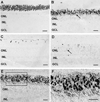
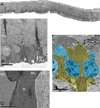
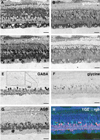
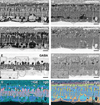


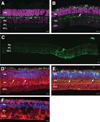


Similar articles
-
Retinitis-pigmentosa-like tapetoretinal degeneration in a rabbit breed.Doc Ophthalmol. 1985 Aug 15;60(1):71-8. doi: 10.1007/BF00164570. Doc Ophthalmol. 1985. PMID: 4042816
-
Real-time imaging of rabbit retina with retinal degeneration by using spectral-domain optical coherence tomography.PLoS One. 2012;7(4):e36135. doi: 10.1371/journal.pone.0036135. Epub 2012 Apr 27. PLoS One. 2012. PMID: 22558356 Free PMC article.
-
Course of loss of photoreceptor function and progressive Müller cell gliosis in rhodopsin P347L transgenic rabbits.Exp Eye Res. 2019 Jul;184:192-200. doi: 10.1016/j.exer.2019.04.026. Epub 2019 Apr 25. Exp Eye Res. 2019. PMID: 31029790
-
[Animal models of human retinal and optic nerve diseases analysed using electroretinography].Nippon Ganka Gakkai Zasshi. 2010 Mar;114(3):248-78, discussion 279. Nippon Ganka Gakkai Zasshi. 2010. PMID: 20387538 Review. Japanese.
-
Apoptosis, retinitis pigmentosa, and degeneration.Biochem Cell Biol. 1994 Nov-Dec;72(11-12):489-98. doi: 10.1139/o94-066. Biochem Cell Biol. 1994. PMID: 7654322 Review.
Cited by
-
Optogenetics for retinal disorders.J Ophthalmic Vis Res. 2014 Jul-Sep;9(3):374-82. doi: 10.4103/2008-322X.143379. J Ophthalmic Vis Res. 2014. PMID: 25667740 Free PMC article.
-
Pathoconnectome Analysis of Müller Cells in Early Retinal Remodeling.Adv Exp Med Biol. 2019;1185:365-370. doi: 10.1007/978-3-030-27378-1_60. Adv Exp Med Biol. 2019. PMID: 31884639 Free PMC article.
-
Targeted disruption of the endogenous zebrafish rhodopsin locus as models of rapid rod photoreceptor degeneration.Mol Vis. 2018 Aug 27;24:587-602. eCollection 2018. Mol Vis. 2018. PMID: 30210230 Free PMC article.
-
The gain in brain: novel imaging techniques and multiplexed proteomic imaging of brain tissue ultrastructure.Curr Opin Neurobiol. 2012 Feb;22(1):94-100. doi: 10.1016/j.conb.2011.08.004. Epub 2011 Sep 22. Curr Opin Neurobiol. 2012. PMID: 21944260 Free PMC article. Review.
-
Chapter 2 - Restoring Vision to the Blind: Optogenetics.Transl Vis Sci Technol. 2014 Dec 30;3(7):4. doi: 10.1167/tvst.3.7.4. eCollection 2014 Dec. Transl Vis Sci Technol. 2014. PMID: 25653888 Free PMC article. No abstract available.
References
-
- Acland GM, Aguirre GD, Ray J, Zhang Q, Aleman TS, Cideciyan AV, Pearce-Kelling SE, Anand V, Zeng Y, Maguire AM, Jacobson SG, Hauswirth WW, Bennett J. Gene therapy restores vision in a canine model of childhood blindness. Nat Genet. 2001;28:92–95. - PubMed
-
- Anderson DH, Neitz J, Saari JC, Kaska DD, Fenwick J, Jacobs GH, Fisher SK. Retinoid-binding proteins in cone-dominant retinas. Invest Ophthalmol Vis Sci. 1986;27:1015–1026. - PubMed
Publication types
MeSH terms
Substances
Grants and funding
LinkOut - more resources
Full Text Sources
Other Literature Sources
Miscellaneous

